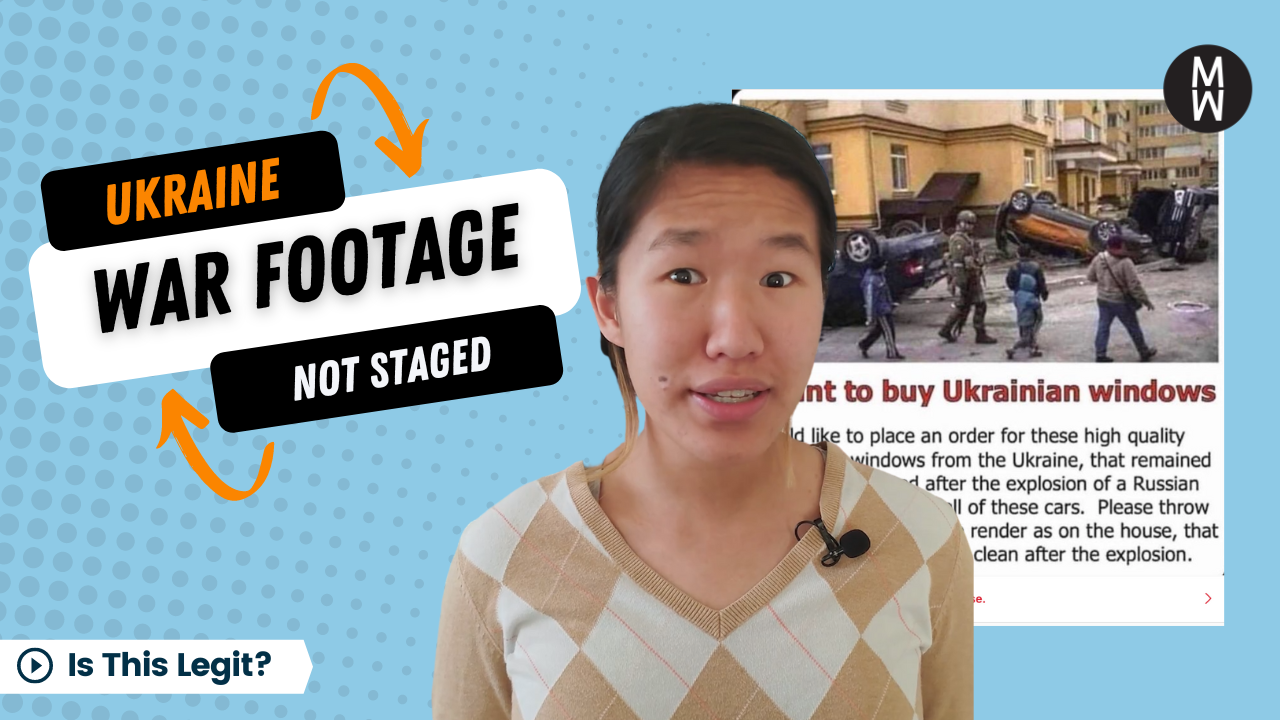Since Russia’s invasion of Ukraine, thousands of people have taken to social media to spread awareness and donate to help the Ukrainian people. But some social media users have a different goal — to spread rumors that what’s happening in Ukraine is all a hoax.
This tweet calls the city of Kyiv “a movie set.” And this Instagram post suggests that the war isn’t real based on a photo that shows flipped cars and buildings with unbroken windows.
The city of Kyiv is now a Movie set…
Come experience the illusion of war as we walk though the Hollywood set know as Kyiv.
PROPS such as abandoned cars, blockades and checkpoints are placed around the city by the visual effects team for a fully immersive 4D experience. pic.twitter.com/WCv9chcEle
— Lez LuTHOR (@LezLuthor) March 8, 2022
While fact-checkers initially saw many false photos and videos claiming to show Ukraine, bad actors are now using legitimate photos from Ukraine to try to discredit what’s really happening there. But fact-checking these types of claims doesn’t have to be difficult. Here are a few tips.
Try a reverse image search
This viral photo of the aftermath of Russia’s attack on Bucha, where more than 400 Ukrainian civilians were killed, shows unbroken Ukrainian windows near the site of a supposed explosion. The caption reads, “Everything is fake,” and the comments were full of people agreeing that the image is proof the war is staged.
When you’re curious about a photo, the easiest way to fact-check it is by doing a reverse image search.
@mediawise Do you have time to #factcheck ? The answer is yes #medialiteracy ♬ original sound – MediaWise
The reverse image search pulled up this article from Snopes. They reported that this is a real photograph taken on April 4, 2022, in Bucha, Ukraine, by Pulitzer Prize-winning photographer, Rodrigo Abd.
The photo can also be seen on The Associated Press’ website with the caption: “A Ukrainian soldier walks with children passing destroyed cars due to the war against Russia, in Bucha, on the outskirts of Kyiv, Ukraine, Monday, April 4, 2022. Local authorities told The Associated Press that at least 16 children were among the hundreds of people killed in Bucha.”
Do a reverse video search
You can also reverse image search videos by either taking a screenshot of the video you’re suspicious of and doing a reverse image search, or by using this free Chrome extension from InVid and WeVerify.
This video clip of a director seeming to address a crowd of actors was shared to Weibo, a Chinese blogging website, in a post that called the war in Ukraine a “hoax.” Pulling a still image from the video and doing a reverse image search on Google proved that the behind-the-scenes movie clip was taken from this YouTube video, published in 2013. The film’s director, Simon Cox, even tweeted that the clip itself was fake and being used unjustifiably to spread rumors about the crisis in Ukraine.
Check your emotions (and dates)
As a general media literacy tip, when you see emotion-evoking photos or videos with eye-catching headlines like “Ukraine ‘faking dead bodies’ in Bucha with mannequins” or “Ukraine responsible for train station attack,” do a reverse image search of the “evidence” to ensure you have full context before making an opinion. A reverse image search or a quick keyword search of the claim will help you track down the original source, and let you know if it’s possibly outdated. If you see a claim that shocks or surprises you, that’s a sign to stop and fact-check.
Rating
Claims that the war in Ukraine is a hoax or a movie set are Not Legit. Many of the videos shared are just clips taken from older YouTube videos, and the photos of bombings in Ukraine are being grossly taken out of context. According to Roger Launius, a former chief historian of NASA, hoax theories about historical events — like the war in Ukraine — tend to grow stronger over time as witnesses pass away, and it’s easier for people to deny that the events took place. Mythologies and conspiracy theories develop — becoming the dominant theme.






